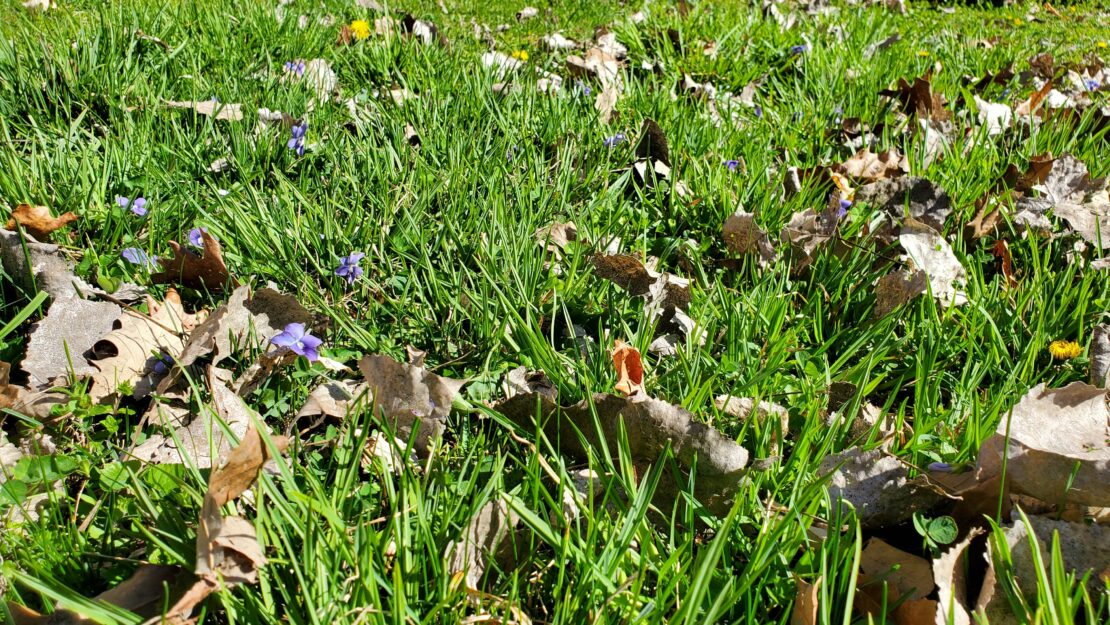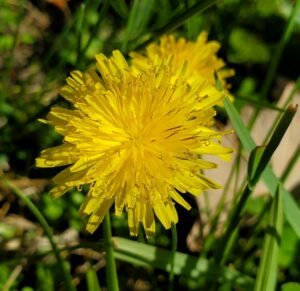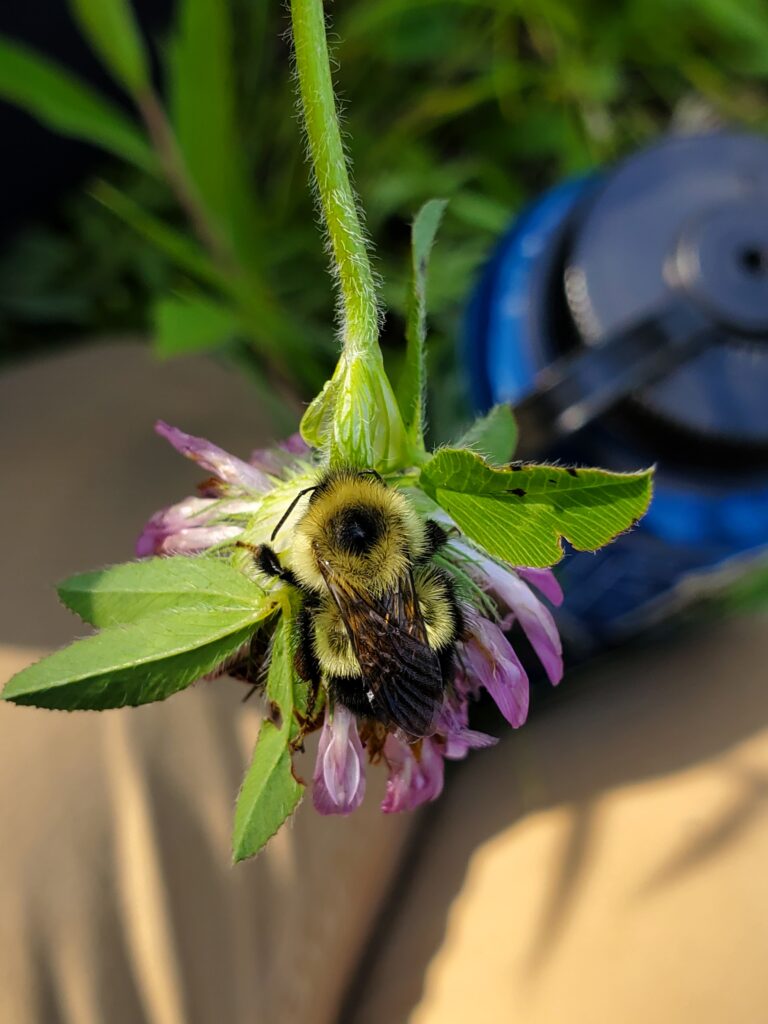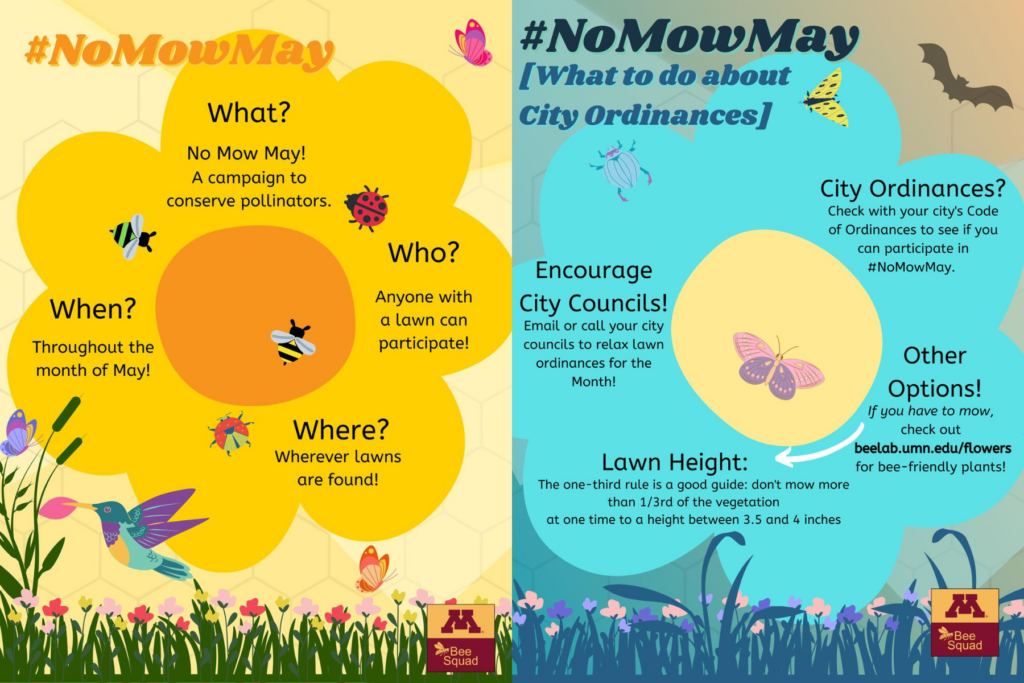No Mow May

By Clara Brown, Fort Snelling Visitor Services Specialist Individual Placement / AmeriCorps Member placed at Fort Snelling State Park, Minnesota Department of Natural Resources

In spring, many pollinators, especially bees, start to come out of their winter slumbers and need to find flowers to provide food for themselves and their future young. For some of these pollinators that emerge in the early spring, like bumble bee queens and mining bees, this can be a real challenge, especially in our urban environments. A somewhat new movement called No Mow May is attempting to change this.

The goal of No Mow May is to encourage lawn owners to hold off on their outdoor spring cleaning a little longer and allow some spring flowers to bloom before they mow. According to the Xerces Society, “Lawns cover 40 million acres, or 2%, of land in the US.” While many lawns consist only of non-native grass, when left unmowed flowers such as dandelions, white clover, and creeping Charlie might start to emerge. While these flowers are not necessarily considered high quality food sources for pollinators, some food is better than no food!
If you want to go a step further in supporting spring pollinators, adding some native plants to your lawn and gardens can increase the amount and quality of food available. Many species of pollinators are specialists and only feed on a few types of flowers so when it comes to supporting native pollinator diversity, plant diversity is the name if the game. According to the University of Minnesota Bee Lab, to support spring pollinators you should “plant a wide variety of native spring blooming flowers, trees, and shrubs, like pussy willows, serviceberries, and bluebells. For blooms in your lawns after May, add self-heal, ground plum, lanceleaf tickweed, or calico American aster.” There are lots of resources out there to help you transform your lawn into a pollinator paradise. Check out information and how to guides from the Xerces Society, the Minnesota Bee Lab, and the Board of Water and Soil Resources Lawns to Legumes program to learn more (linked below)!
 Now you may be thinking to yourself, I love to mow my lawn, or my HOA will never let me do this! Don’t worry, you don’t have to take the term No Mow May literally to participate. Studies have found that leaving your lawn unmowed for an entire month might not actually be the best way to support flower growth. If you hold off a little and mow around every two or three weeks you can increase flower blooms and provide food for hungry bees. Additionally, if nonnative flowers like dandelions start popping up in your yard you can leave them be for a while so pollinators can gather their food but then mow them before they go to seed so that you don’t get an outbreak on your hands.
Now you may be thinking to yourself, I love to mow my lawn, or my HOA will never let me do this! Don’t worry, you don’t have to take the term No Mow May literally to participate. Studies have found that leaving your lawn unmowed for an entire month might not actually be the best way to support flower growth. If you hold off a little and mow around every two or three weeks you can increase flower blooms and provide food for hungry bees. Additionally, if nonnative flowers like dandelions start popping up in your yard you can leave them be for a while so pollinators can gather their food but then mow them before they go to seed so that you don’t get an outbreak on your hands.
Pollinators are essential for all ecosystems, including urban ones. This year consider participating in No Mow May, planting native flowers, and exploring other ways to make your yard more pollinator friendly!


References
- Info about No Mow May
- Info about making your yard more pollinator friendly